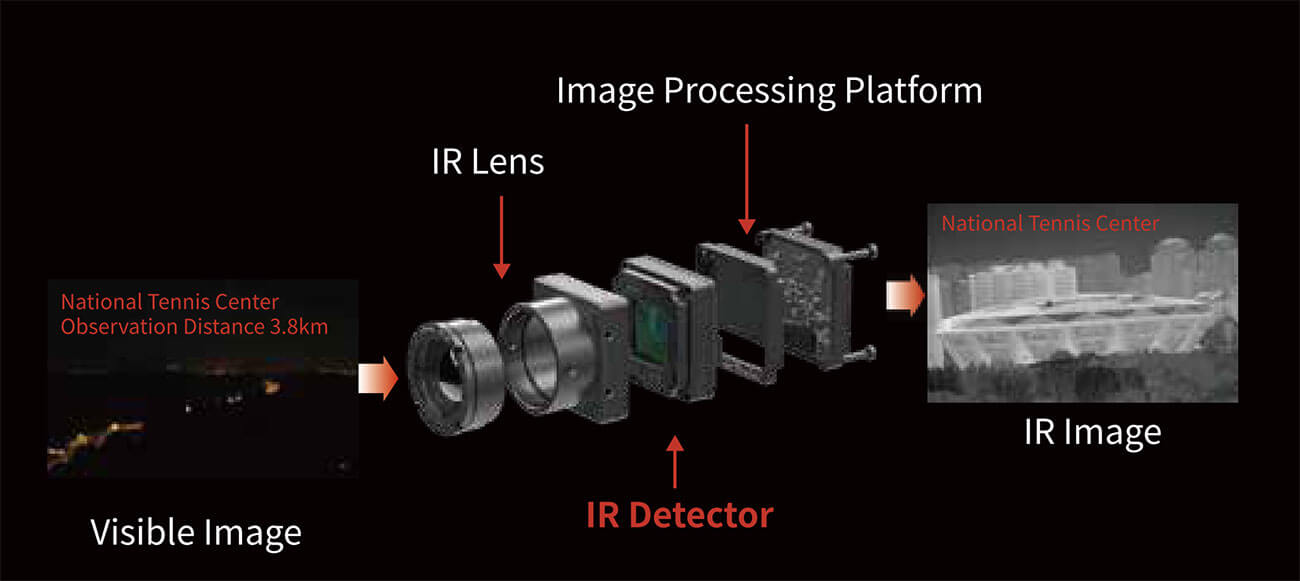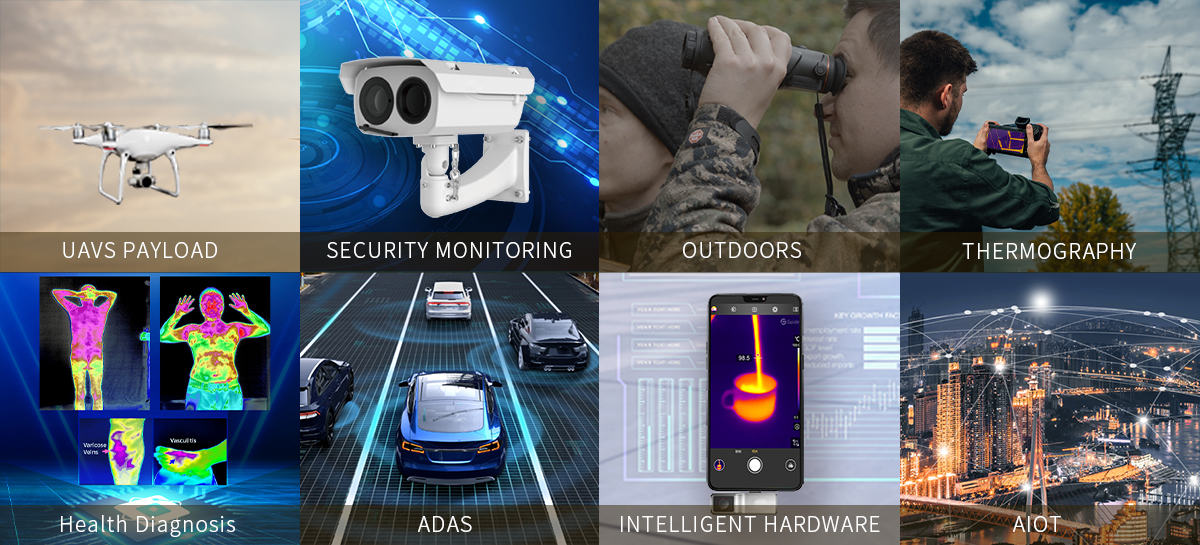1. What is Infrared Ray?
Any object whose temperature is higher than absolute zero (- 273 ℃) can radiate infrared rays, which, together with visible light, ultraviolet rays, X-rays, gamma rays, cosmic rays and radio waves, constitute a complete and continuous electromagnetic spectrum. The wavelength of visible light that human eyes can perceive is between 0.38μm and 0.78μm. For electromagnetic waves that are longer than 0.78μm and invisible to our eyes, we usually call them infrared rays.

2. Characteristics of Infrared Ray
- All natural objects with temperatures greater than absolute zero continuously emit and absorb infrared ray at day and night
- The intensity of infrared radiation can reflect the temperature. When the infrared radiation enhances, the temperature of the same object will rise
- Infrared radiation has a strong thermal effect, that is, infrared radiation is absorbed by the object and converted into heat energy, so that the temperature of the object increases
- Since infrared wavelength is long, it can easily penetrate clouds and smoke through the diffraction
All characteristics above are the basis for the wide application of infrared related technology in many fields.
3. What is Thermal Imaging?
In nature, all objects will radiate infrared ray. By using the infrared detector to measure the infrared ray difference between the target itself and the background, you can get different infrared images, which are also called thermal images.
Infrared thermal imaging is a kind of method which utilizes infrared radiation and thermal energy to gather information about objects. It converts invisible infrared radiation into visible infrared thermal image with temperature distribution of the target surface. Different objects and even different parts of the same object have different radiation ability and infrared reflection strength.
According to the radiation difference between the object and the background environment and the radiation difference of each part of the object itself, the infrared thermal image can show the radiation fluctuation of each part of the scene, thus showing the characteristics of the scene.

4. Advantages of Infrared Thermal Imaging
Infrared ray (or thermal radiation) is the most widespread form of radiation in nature. The atmosphere and smoke clouds can absorb visible and near-infrared light, but are transparent to infrared light between 3μm to 5μm and 8μm to 14μm. For this reason, these two wavelengths are known as infrared "Atmospheric Windows". By using these two windows, we can see situations clearly in front of us even at a completely dark night or in a bad environment.
Thermal imaging is a completely passive technique capable of imaging in the total absence of any light due to its feature of not relying on visible light. Compared with the visible imaging technology, its thermal radiation can penetrate more effective in hostile environments, such as strong light, rain & snow, fog & haze etc..

5. How does Infrared Thermal Imaging Work?
Infrared thermal imaging system is a passive non-contact detection and identification of infrared technology. It focuses the infrared radiation of the scene on the focal plane array infrared detector through the infrared optical system that can pass through infrared radiation. The infrared detector converts the radiation signal of different intensity into the corresponding electrical signal, and then through amplification and video processing, forms the infrared image that can be observed by the naked eyes.

6. Applications of Infrared Thermal Imaging
Temperature measurement and all-weather imaging are two basic functions of infrared thermal imaging technology. Products developed based on these two technologies are not only applied to electric power, security & monitoring, industrial manufacturing, scientific research, medical treatment and other traditional fields, but also enter our daily life with a new attitude.
Now infrared thermal imaging is very popular in many emerging fields. It facilitates our life and assists the smart home system to control temperature, detect electrical failures and pipe leakage etc.. It becomes our security guard to ensure the safety of driving at night and improve the security of family homes. It is also our entertainment tool so that we can venture outdoors without fear of the night to experience extraordinary fun during aerial photography...

Go Top